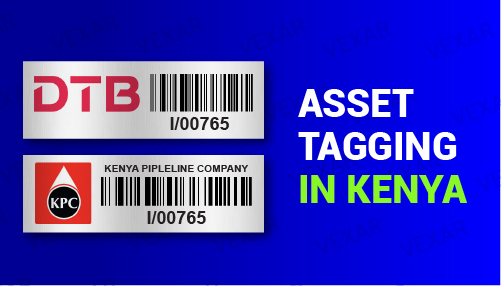The Science Behind the Durability of Aluminium Asset Tags


The Science Behind the Durability of Aluminium Asset Tags.
When it comes to tracking and managing assets, durable and reliable identification is crucial. This is where aluminium asset tags come into play. These tags are known for their exceptional durability and ability to withstand harsh environments. But have you ever wondered about the science behind their impressive longevity? Let’s delve into it.
Aluminum’s Natural Properties
Aluminium itself is a remarkable material. It possesses several advantageous characteristics that contribute to the durability of asset tags. Firstly, aluminium is highly resistant to corrosion. It forms a thin oxide layer on its surface, which acts as a protective barrier against moisture, chemicals, and other corrosive elements. This natural property ensures that asset tags remain intact and readable, even in challenging conditions.
Additionally, aluminium is lightweight yet strong. Its strength-to-weight ratio is higher compared to other commonly used metals. This means that aluminium asset tags can withstand physical stress, such as abrasion or impact, without being easily damaged or deformed. This makes them ideal for outdoor applications and environments where ruggedness is required.
Anodization Process
The durability of aluminium asset tags is further enhanced through a process called anodization. Anodization is an electrochemical process that involves creating an oxide layer on the surface of the aluminium. This layer not only adds to the material’s corrosion resistance but also provides a base for various finishing treatments.
During anodization, the aluminium is immersed in a dilute acid solution and subjected to an electric current. This causes oxygen ions to bond with the metal, resulting in the creation of a thicker and more robust oxide layer. The thickness of this layer can be controlled, depending on the desired durability and aesthetic requirements of the asset tag.
Printing and Coating Techniques
To ensure readability and longevity, asset tags are often printed with information such as unique identification numbers, barcodes, or QR codes. Printing techniques, such as laser engraving or screen printing, are used to embed the information onto the surface of the aluminium tag. These printing methods are chosen for their ability to create permanent and highly legible markings that can withstand wear and exposure to various elements.
Moreover, to provide additional protection against environmental factors, such as UV radiation or harsh chemicals, asset tags can be coated with a clear protective layer. This layer acts as a shield, preventing the printed information from fading or being damaged over time. The coating also enhances the overall aesthetics and ensures the longevity of the asset tag.
The Science in Action
As a result of the natural properties of aluminium, the anodization process, and the printing and coating techniques used, aluminium asset tags are capable of withstanding harsh conditions and maintaining their readability for extended periods. Whether exposed to extreme temperatures, moisture, or chemicals, these durable tags provide crucial asset identification and management.
In conclusion, the science behind the durability of aluminium asset tags is a combination of the material’s inherent properties, the anodization process, and the printing and coating techniques employed. These factors synergistically work together to create asset tags that are corrosion-resistant, physically tough, and capable of enduring harsh environments. When it comes to tracking and managing assets effectively, investing in aluminium asset tags proves to be a smart choice.
Aluminium asset tags have gained popularity in various industries due to their exceptional durability. But what exactly makes them so long-lasting? The answer lies in the science behind these innovative tags.
Aluminium, known for its lightweight and corrosion-resistant properties, plays a crucial role in the durability of asset tags. When exposed to harsh environmental conditions such as extreme temperatures, moisture, or chemicals, aluminium remains unaffected. This resilience ensures that the asset tags can withstand even the harshest of environments without deteriorating.
Furthermore, aluminium possesses excellent resistance to abrasion and physical impact. This means that even when subjected to rough handling or accidental impacts, the asset tags remain intact and legible. This is particularly important for assets that are constantly on the move or exposed to heavy usage.
Another scientific aspect contributing to the durability of aluminium asset tags is their ability to resist fading and discoloration over time. The material’s inherent resistance to UV radiation ensures that the tag’s information remains clear and readable for an extended period.
Additionally, aluminium’s non-magnetic properties make it ideal for applications where magnetic interference could pose a risk. It ensures that asset tracking systems remain accurate and reliable without any interference from external magnetic sources.
In conclusion, the science behind aluminium asset tags reveals a combination of factors contributing to their remarkable durability. From corrosion resistance and impact resilience to UV stability and non-magnetic properties, these tags are designed with longevity in mind. By choosing aluminium asset tags, businesses can ensure their assets are effectively tracked and identified for years to come.

